Book NOW for $1 £1 €1 • Flexible Payments • No Change Fees • Private Departures Available
- Home >>
- Best time to visit India
The weather
in India
Being the 7th largest country in the world, it’s recommended to stick to one region when planning your trip to India. The landscape boasts a diversity like no other; glistening salt flats, barren deserts, mossy forests, powder-white beaches, misty tea stations and soaring mountains. So knowing what kind of holiday in India you’re looking for, will depend on the time of year you choose. As a rule it's generally safe to visit between October and March to avoid the monsoon season.
India follows three seasons; Summer (from March to May), Winter (from November to February) and Monsoon (from June - October). However, even during the winter the country doesn’t get too cold as the Himalayas offer protection from the wind. And due to the varied climates, altitudes and latitudes across the country, these seasons shouldn’t pose as too much of a restriction as weather can vary dramatically from state to state.
Did you know?
The small village of Mawsynram in Meghalaya receives the largest amount of rainfall in the entire world (around 11871 mm each year).
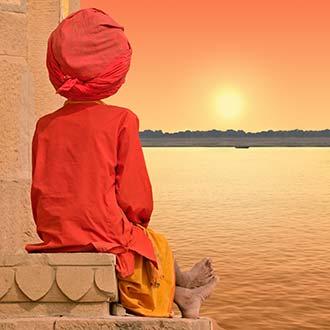
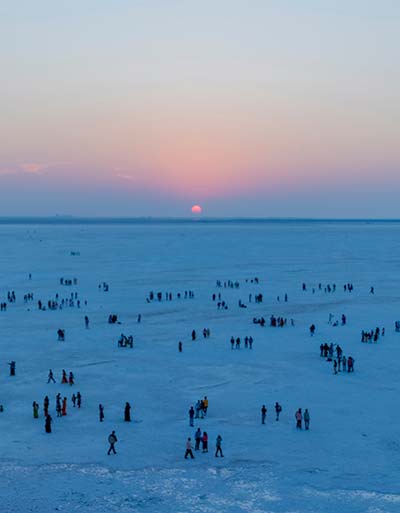
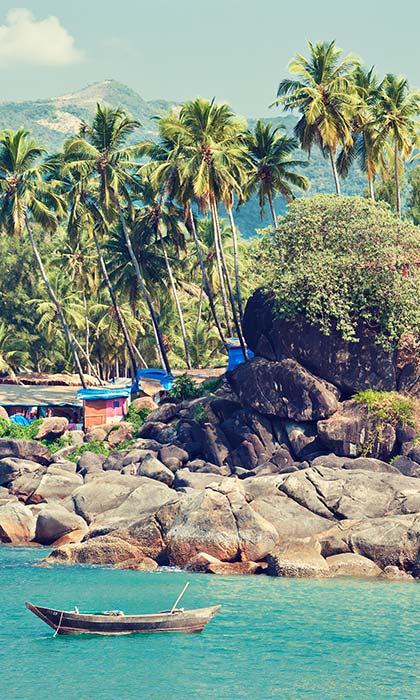
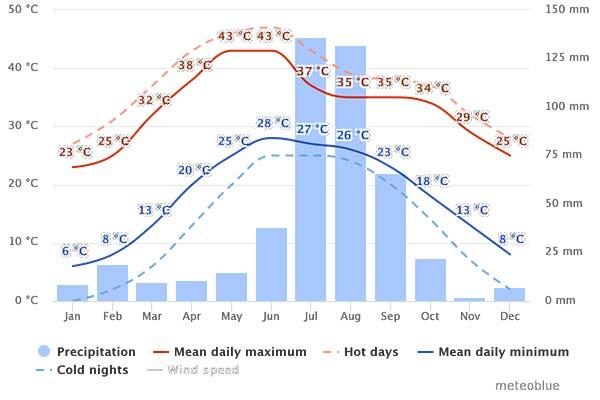
Best time to visit India
The Himalayan foothills are best visited from February to May when the temperatures aren’t too low and Monsoon season hasn’t yet begun. This area includes Darjeeling and Shimla.
If you are touring around the northern and central parts of India, the best time to go is from October to March. It isn’t too hot and the weather is mostly dry. This includes the areas of Delhi, Agra and down to Rajasthan.
If you are visiting the eastern parts of India such as Kolkata, it's best to go between October and January. The western side (around Goa and Mumbai) is best visited from October to May to avoid the rain, however it is warm all year round.
The south of India (Kerala) experience heavy rain between June and August and can get unbearably hot in April and May. It’s best to plan your trip between September and March.
Festivals & events
in India
India is a colourful, vibrant country on the slowest of days, with throngs of people almost everywhere you look. But visit during a festival and the cities will be filled with even more energy. It’s exciting, intoxicating and the vibe is utterly contagious. That being said, if you don’t fancy getting involved in the festivities, it’s handy to know what dates to avoid!
Rann Utsav
Rann of Kutch
(Nov 23, Dec 22, Jan 21 & Feb 19)
Rann Utsav is held in the stunning salt desert in Gujarat, west India, bordering on Pakistan. The festival educates visitors on the history and culture of the area. They wear traditional dress whilst performing dances, playing music and showcasing handmade crafts. A wide range of delicious street food is also served.

Ardh Kumbh Mela
Prayagraj
(February 4 & 10)
The largest religious gathering in the world takes place along the holy river Ganges in India. Around 150 million people come here to bathe in the water to wash away their sins and bring salvation from the cycle of life and death. The holy men (Naga Sadhus) come out of their reclusive caves on this day only to gather and worship Lord Shiva.
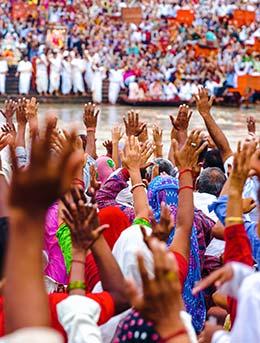
Holi Festival - All over India
(March 21)
Often referred to as the festival of colours, this event is so well-known that it is now celebrated all over the world. Holi celebrates Lord Krishna, a reincarnation of Lord Vishnu, by throwing brightly coloured powder at each other and having water fights. This is a representation of how Lord Krishna liked to prank girls by doing those things exactly!
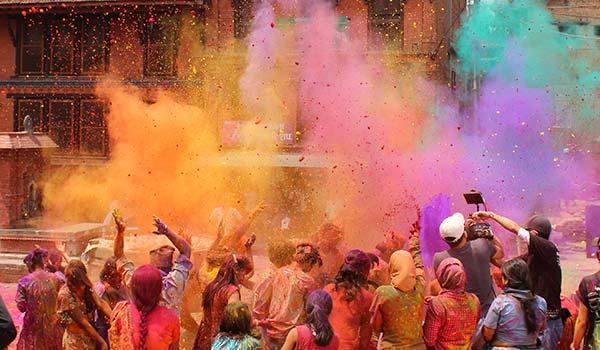
Ganesh Festival
Mumbai
(September 2)
This festival honours the sacred elephant-headed god, Ganesh. Giant, elaborately decorated statues of Ganesh are paraded through the town with a roaring audience following, singing and dancing their way to the ocean, where the various statues are submerged below the surface.
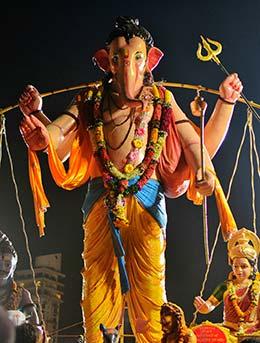
Pushkar Camel Fair
Pushkar
(November 12)
An astonishing 400,000 people and 50,000 camels come together in Pushkar for the much celebrated Camel Fair. The camels are adorned in colourful cotton, beads, blankets and tassels with elaborate designs shaved into their fur. The guests of honour are paraded through the town and entered into a beauty contest.
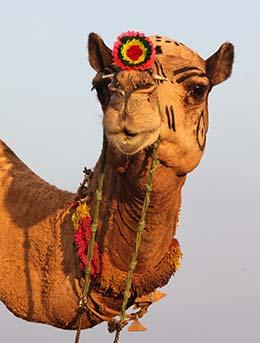
Diwali
Varanasi, Jaipur, Udaipur, Amritsar
(October 27)
One of the biggest festivals in India, the ‘festival of lights’ is a great one to experience if you’re in one of these areas. Skies are filled with fireworks, streets are packed with glowing lanterns and colourful lights, and candles cover every free space you can see. It’s remarkable, beautiful and should not be missed.
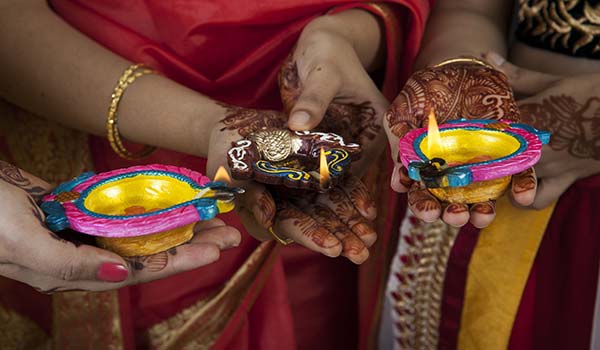
Krishna Janmashtami
Mumbai
(August 24)
This festival celebrates the birthday of Lord Krishna and takes place all over India in various ways. One of the most fun parts of the day involves clay pots filled with curd and suspended above buildings. Groups of men team up to form human pyramids where people clambour up to reach and break the clay pots. The streets are filled with ‘organised chaos’ all through the day!
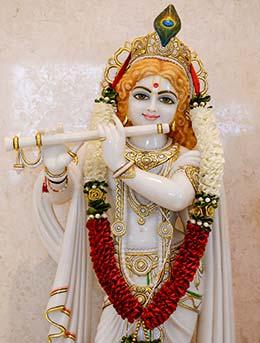
Hemis
Ladakh
(July 11 - 13)
Hemis celebrates the birth of the founder of Tibet Tantric Buddhism - Padmasambhava. Thousands of locals and tourists flock to the area to witness the Cham Dance performed by priests, accompanied by monks playing symbols, drums and other instruments. Priests are dressed in flamboyant costumes wearing large, elaborately painted masks.
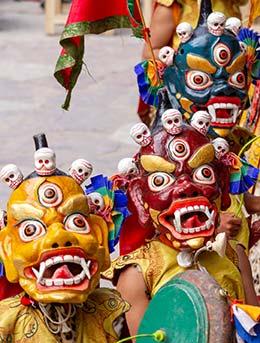
Dussehra
Kullu Valley, Himachal Pradesh
(October 8)
One of the most famous festivals in India, Dussehra is celebrated all over the country, each with their own form of festivities. The event celebrates the day when Lord Rama defeated the demon king Ravana with symbolic reenactments of scenes from Ramayana. 45 feet tall effigies of both are paraded through the streets and burnt at the end of the night.
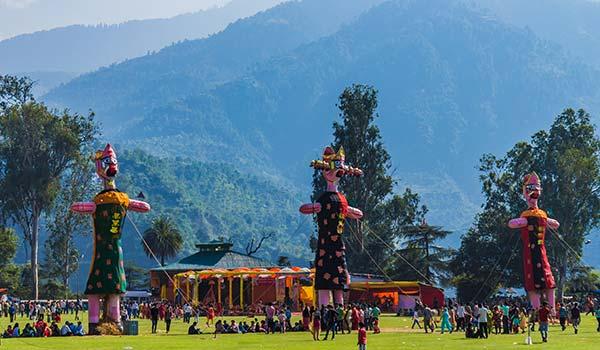
Adivasi Mela
Odisha
(January 25 - February 9)
Adivasi Mela is an unusual festival, but very interesting if you happen to catch it. The event centers around educating attendees about the remaining tribal cultures of Odisha. For 15 days, 62 tribes come together to showcase their traditions and handcrafts, sing tribal songs and perform dances and shows to the visitors.
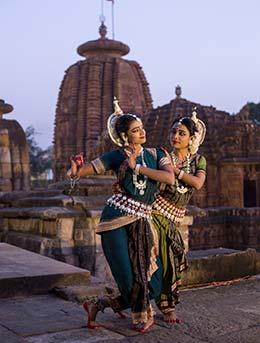
Navratri
Kolkata & Delhi
(September 29 & October 7)
Navratri is held over 9 days and honours Durga and all of her incarnations. In Kolkata, huge, elaborately decorated statues of the Goddess Durga are submerged in the river. Delhi is also a great place to experience this festival. Plays are held every night during this period at the stunning Red Fort, recounting stories about Lord Ram.
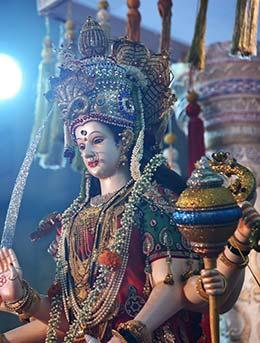
Maha Shivratri
North India & Nepal
(March 4)
This day is dedicated to Lord Shiva and is of great importance to devotees. People worship Lord Shiva on this day to attain redemption from their sins. They celebrate this date by sharing stories about the Lord, shouting wishes of good luck to each other in the streets and singing devotional songs throughout the day.
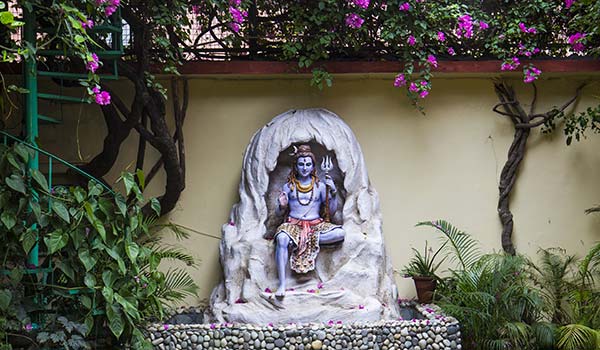
Other public holidays to be aware of when planning your trip to India
- Republic Day - Jan 26
- Mahavir Jayanti - April 6
- Good Friday - April 19
- Buddha Purnima - May 19 (dates may vary)
- Eid al-Fitr - June 4-5 (dates may vary)
- Independence Day Aug 15
- Janmastami - Aug 24 (dates may vary)
- Eid-al-Adha - Aug 11-12 (dates may vary)
- Muharram - Sept 10 (dates may vary)
- Dussehra - Oct 8 (dates may vary)
- Gandhi Jayanti (Gandhi’s Birthday) - Oct 2
- Eid-Milad-un-Nabi - Nov 9 - 10 (dates may vary)
- Guru Nanak Jayanti - Nov 12
- Christmas - Dec 25




